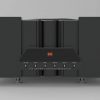Once upon a time, there was an office. In this office there were nearly 100 employees, all neatly ensconced in cubicles. Most of them labored very hard, often putting in more than their mandated 40-hour weeks and ensuring that their work was of the highest quality. But they were a bit chafed by the fact that one particular employee named Dotty seemed to get all the attention from the boss. A nondescript bespectacled middle-aged woman who seemed to stay quietly to herself, Dotty sure didn’t seem the type to be showered with unusual notice. Yet whenever Mr. Smithers came through, she was always the first one greeted. He even asked after her children and asked if there was anything she needed!
What did Dotty do that the other employees didn’t? Well if anyone had asked, they might have found out that Dotty always had her attention on the bottom line, and would seek out and find ways to save the company money. Mr. Smithers, having to regularly report to the Board of Directors, very much appreciated how the cost savings made him look so good, quarter after quarter. Dotty had an edge on the rest of the employees: she had a particularly good Return On Investment (ROI).
Company executives must above all show profitability for a company — hence they always have attention on the ROI of equipment and property as well as employees. Because considerable money is expended for it, the IT department is watched closely for ROI. One surefire investment that yields very high ROI — and is hence bound to garner praise from the boss — is automatic defragmentation software.
Defragmentation has been known for some time to be vital to system performance — but the traditional scheduled variety does not provide the ROI that it perhaps once did. The first problem is that it indeed requires scheduling — a regular task that is going to rob valuable IT staff time from more important jobs. Scheduling defragmentation has also been made increasingly difficult by the fact that many computers must run 24×7 and have no available “time window” in which the defragmentation process will not negatively impact users. These systems — usually important servers — must then be regularly taken offline for maintenance, slowing down production, or left with accumulating file fragmentation, greatly slowing down performance and threatening reliability. Where’s the ROI in that?
On the other hand, a completely automatic defragmentation only needs to be installed. Forever after, it simply defragments whenever idle system resources are available. It never requires scheduling as there is never a negative performance hit from the defragmentation process. And not only are performance and reliability always maximized, but hard drive life is lengthened requiring less frequent purchase of costly hardware.
Like Dotty, completely automatic defragmentation provides consistently high ROI, quarter after quarter and year after year. And the boss will take notice!























